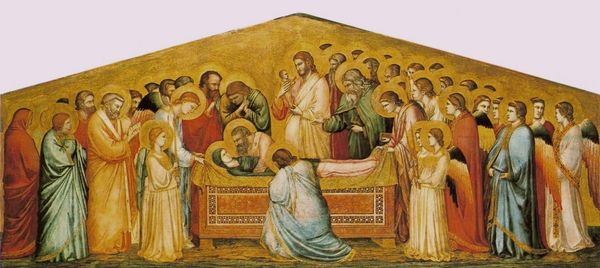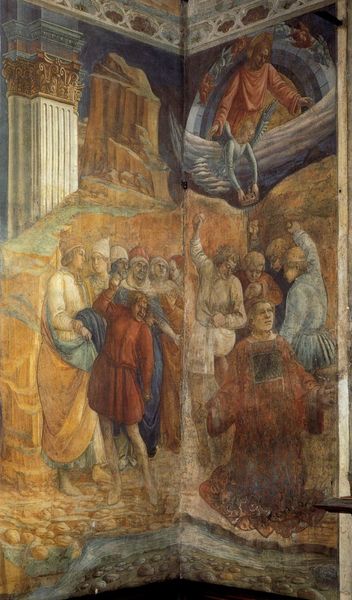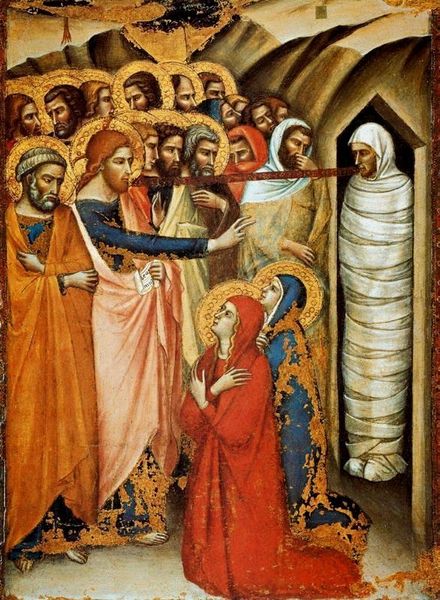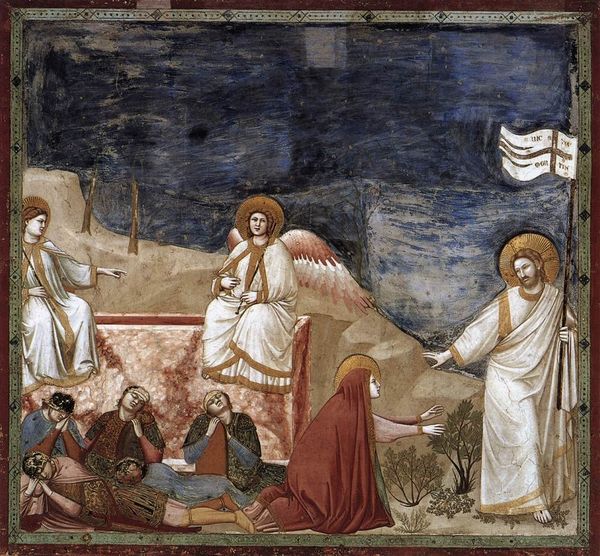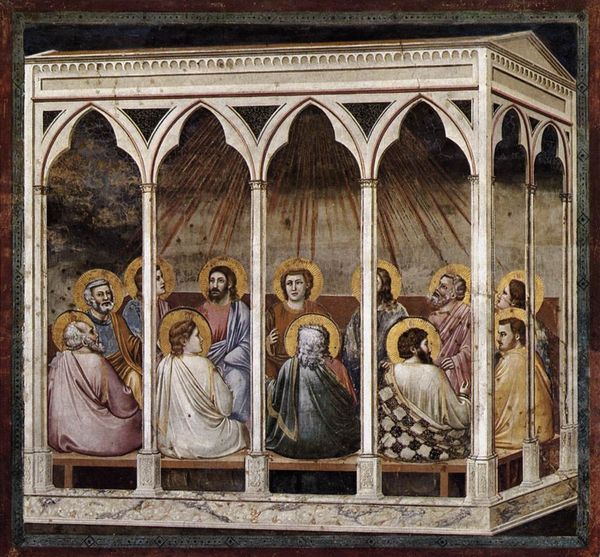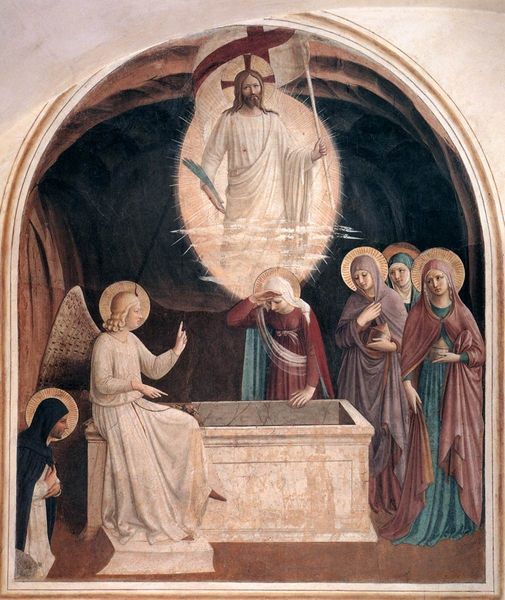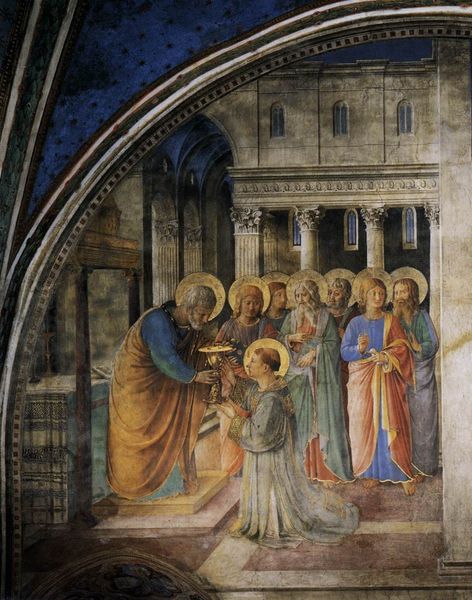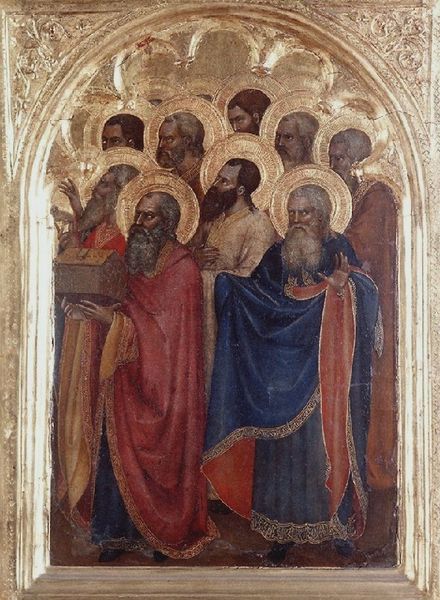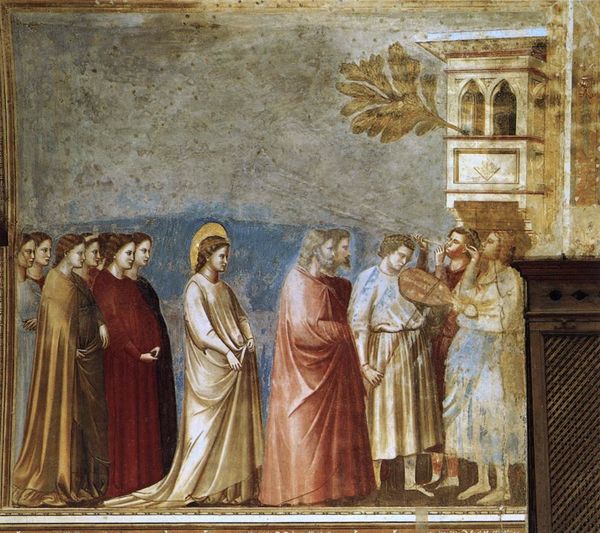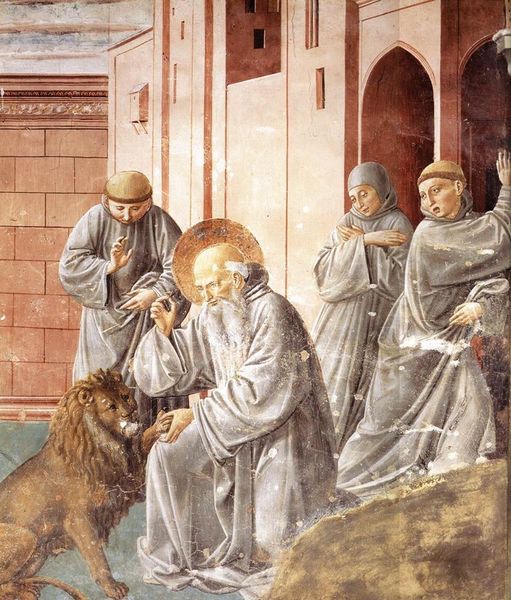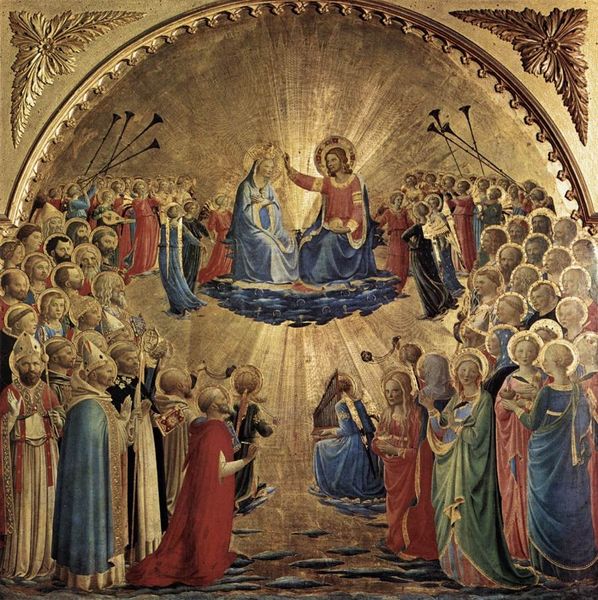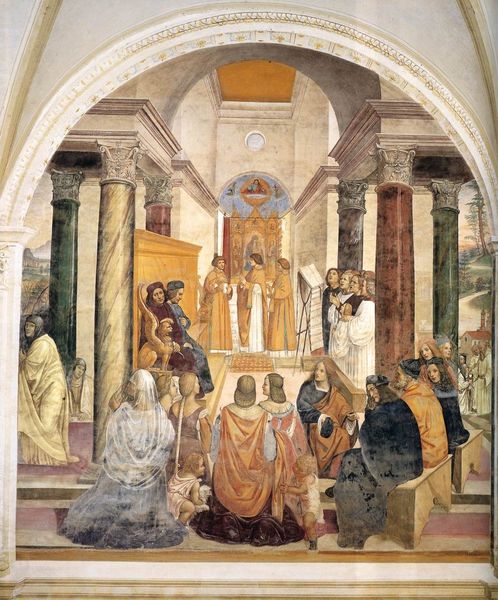
fresco
#
portrait
#
high-renaissance
#
narrative-art
#
holy-places
#
fresco
#
oil painting
#
history-painting
#
italian-renaissance
Copyright: Public domain
Curator: The fresco before us, titled "Benedict Presents the Olivetan Monks with His Rule," was crafted in 1508 by the artist Il Sodoma. Its serene tonality initially strikes me, dominated as it is by shades of white and brown, evoking a sense of monastic austerity and order. What are your immediate impressions? Editor: Austerity, certainly, but also a distinct power dynamic. Look at the visual weight centered on Benedict himself, seated, with his outstretched arms directing the gaze. The implied lines converge to emphasize his central role and the architectural framework within which this act of presenting the rule takes place seems highly structured. Curator: Exactly. Notice the geometry at play: the circular motif in the upper architecture is cleverly repeated throughout the scene and then sharply contrasts to the orthogonals, all leading toward Benedict. We might even read Benedict's figure as an architectural component in itself, uniting these features. It is this fusion of the organic and architectural which generates this scene's powerful aesthetic. Editor: And the significance of place. The work belongs to a series commissioned for the cloister of Santa Anna in Camprena. That site specificity—the monks' literal, everyday experience within this painted space—deepens the painting's meaning as a continuous reminder of their order’s foundation. Consider how the fresco served not just as decoration but also as propaganda for the Olivetan monastic order. Curator: In that respect, the visual elements bolster your historical claim. Il Sodoma constructs space, balances shapes and uses an exquisite palette of muted tones, all combining to inspire solemnity and an overall harmonic understanding in line with monastic ideals. It represents a moment of idealized rule and order, not the lived messy version, of course. Editor: Precisely. It's fascinating how this image—created within a very specific religious context—speaks so clearly about the intersection of institutional authority, artistic expression, and architectural placement to cement communal purpose and group cohesion. Curator: Indeed. In its formal execution, the painting reinforces core ideologies and presents an enduring representation that speaks directly to its location and the socio-cultural importance of art. Editor: Right, and that interplay between function and form ultimately deepens the fresco's complexity beyond mere aesthetic appeal.
Comments
No comments
Be the first to comment and join the conversation on the ultimate creative platform.
